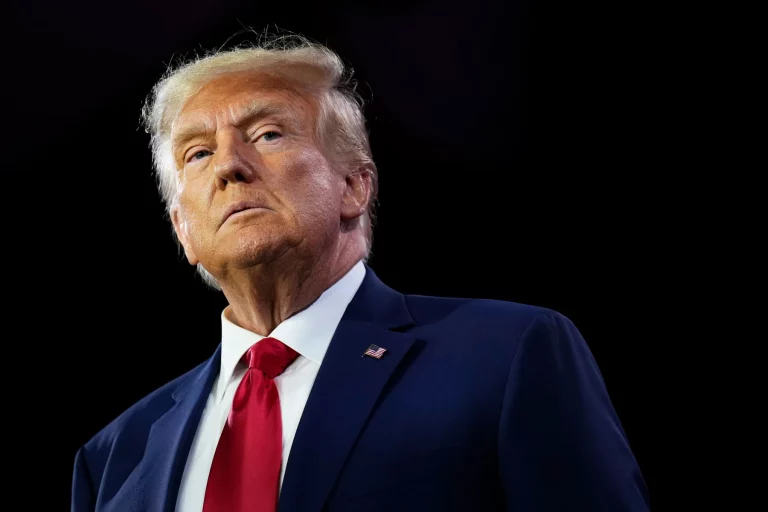
Who are the 46 Presidents of the United States?
The United States of America, a nation known for its democratic ideals and historical significance, has been led by 46 Presidents since its inception. Each President has played a crucial role in shaping the nation’s destiny, facing diverse challenges, and leaving a unique mark on American history. In this blog, we will take a journey through time and explore the lives and legacies of all 46 Presidents who have held the highest office in the land.
1. George Washington (1789-1797):
The first President of the United States, George Washington, set the precedent for future leaders. He led the nation through its early formative years and was known for his military prowess and unifying leadership.
2. John Adams (1797-1801):
John Adams, the second President, was a Founding Father who played a significant role in drafting the Declaration of Independence and fostering American diplomacy.
3. Thomas Jefferson (1801-1809):
The principal author of the Declaration of Independence, Thomas Jefferson’s presidency is remembered for the Louisiana Purchase and the Lewis and Clark expedition.
4. James Madison (1809-1817):
James Madison led the nation during the War of 1812 and was instrumental in shaping the U.S. Constitution.
5. James Monroe (1817-1825):
The Monroe Doctrine, which warned European powers against further colonization in the Americas, was a key highlight of James Monroe’s presidency.
6. John Quincy Adams (1825-1829):
Son of John Adams, John Quincy Adams was known for his commitment to education and public service.
7. Andrew Jackson (1829-1837):
Andrew Jackson was a controversial figure, known for expanding presidential powers and implementing policies like Indian removal.
8. Martin Van Buren (1837-1841):
As the first President born after the American Revolution, Martin Van Buren grappled with economic challenges during his term.
9. William Henry Harrison (1841):
William Henry Harrison’s presidency was the shortest in U.S. history, lasting only 31 days.
10. John Tyler (1841-1845):
John Tyler, the first Vice President to succeed to the presidency, faced challenges due to his stance on states’ rights.
11. James K. Polk (1845-1849):
James K. Polk’s presidency was marked by territorial expansion, including the acquisition of California and the Oregon Territory.
12. Zachary Taylor (1849-1850):
Zachary Taylor, a war hero, died in office after just 16 months as President.
13. Millard Fillmore (1850-1853):
Millard Fillmore signed the Compromise of 1850, which attempted to address tensions between slave and free states.
14. Franklin Pierce (1853-1857):
Franklin Pierce’s presidency was overshadowed by the rising tensions over slavery.
15. James Buchanan (1857-1861):
James Buchanan’s term was marred by the growing sectional crisis that eventually led to the Civil War.
16. Abraham Lincoln (1861-1865):
Abraham Lincoln is remembered for his leadership during the Civil War and his efforts to abolish slavery with the Emancipation Proclamation.
17. Andrew Johnson (1865-1869):
Andrew Johnson became President after Lincoln’s assassination and faced challenges during the Reconstruction era.
18. Ulysses S. Grant (1869-1877):
As a Civil War hero, Ulysses S. Grant led the nation during a period of reconstruction and expansion.
19. Rutherford B. Hayes (1877-1881):
Rutherford B. Hayes’s presidency is notable for ending Reconstruction and promoting civil service reform.
20. James A. Garfield (1881):
James A. Garfield’s presidency was cut short when he was assassinated just four months into his term.
21. Chester A. Arthur (1881-1885):
Chester A. Arthur advocated for civil service reform during his term.
22. Grover Cleveland (1885-1889):
Grover Cleveland’s two non-consecutive terms made him both the 22nd and 24th President.
23. Benjamin Harrison (1889-1893):
Benjamin Harrison’s presidency was marked by economic and political challenges.
24. Grover Cleveland (1893-1897):
Cleveland returned to the presidency for his second term, focusing on economic issues.
25. William McKinley (1897-1901):
William McKinley led the nation through the Spanish-American War and promoted industrial growth.
26. Theodore Roosevelt (1901-1909):
A progressive President, Theodore Roosevelt championed conservation and trust-busting.
27. William Howard Taft (1909-1913):
William Howard Taft, a former Supreme Court Justice, focused on antitrust legislation and global diplomacy.
28. Woodrow Wilson (1913-1921):
Woodrow Wilson’s presidency saw significant domestic reforms and involvement in World War I.
29. Warren G. Harding (1921-1923):
Warren G. Harding’s term was marked by political scandals, including the Teapot Dome scandal.
30. Calvin Coolidge (1923-1929):
Calvin Coolidge’s presidency was characterized by a pro-business stance and economic growth.
31. Herbert Hoover (1929-1933):
Herbert Hoover’s term began during the Great Depression, making it one of the most challenging in U.S. history.
32. Franklin D. Roosevelt (1933-1945):
FDR led the nation through the Great Depression and World War II, enacting the New Deal to combat economic crisis.
33. Harry S. Truman (1945-1953):
Harry S. Truman made the historic decision to drop atomic bombs on Japan, ending World War II.
34. Dwight D. Eisenhower (1953-1961):
As a World War II general, Dwight D. Eisenhower led the nation during a time of prosperity and the Cold War.
35. John F. Kennedy (1961-1963):
John F. Kennedy’s presidency was cut short by his assassination in 1963.
36. Lyndon B. Johnson (1963-1969):
Lyndon B. Johnson focused on civil rights and domestic reforms, including the Great Society programs.
37. Richard Nixon (1969-1974):
Richard Nixon’s presidency ended in resignation due to the Watergate scandal.
38. Gerald Ford (1974-1977):
Gerald Ford became President after Nixon’s resignation and later controversially pardoned him.
39. Jimmy Carter (1977-1981):
Jimmy Carter focused on energy conservation and human rights during his term.
40. Ronald Reagan (1981-1989):
Ronald Reagan, known for his conservative policies, presided over an era of economic growth.
41. George H.W. Bush (1989-1993):
George H.W. Bush’s presidency saw the end of the Cold War and the Gulf War.
42. Bill Clinton (1993-2001):
Bill Clinton focused on economic prosperity and welfare reform during his two terms.
43. George W. Bush (2001-2009):
George W. Bush led the nation through the September 11 attacks and wars in Afghanistan and Iraq.
44. Barack Obama (2009-2017):
Barack Obama became the first African American President, focusing on healthcare reform and economic recovery.
45. Donald Trump (2017-2021):
Donald Trump, a businessman and reality TV star,

